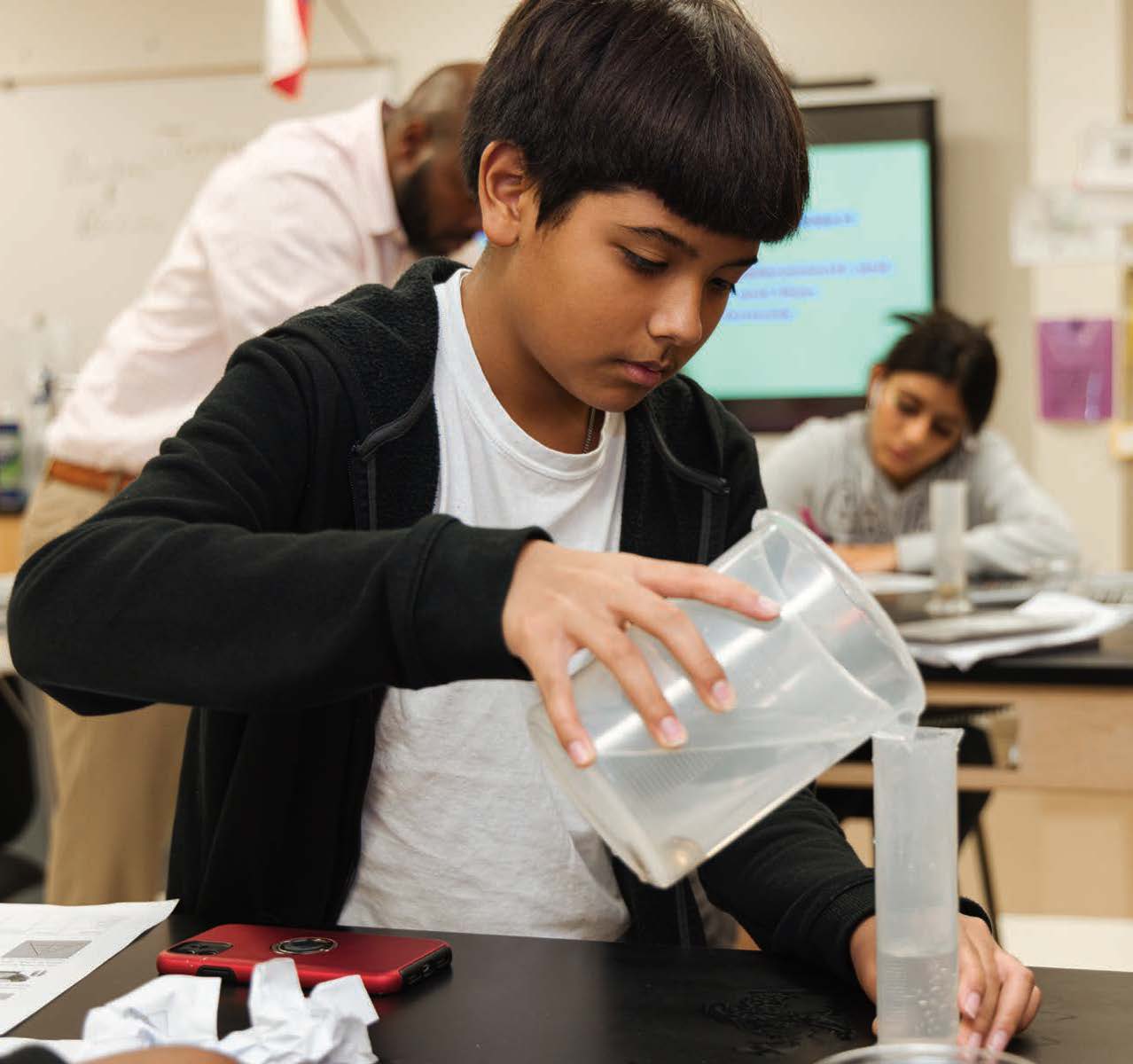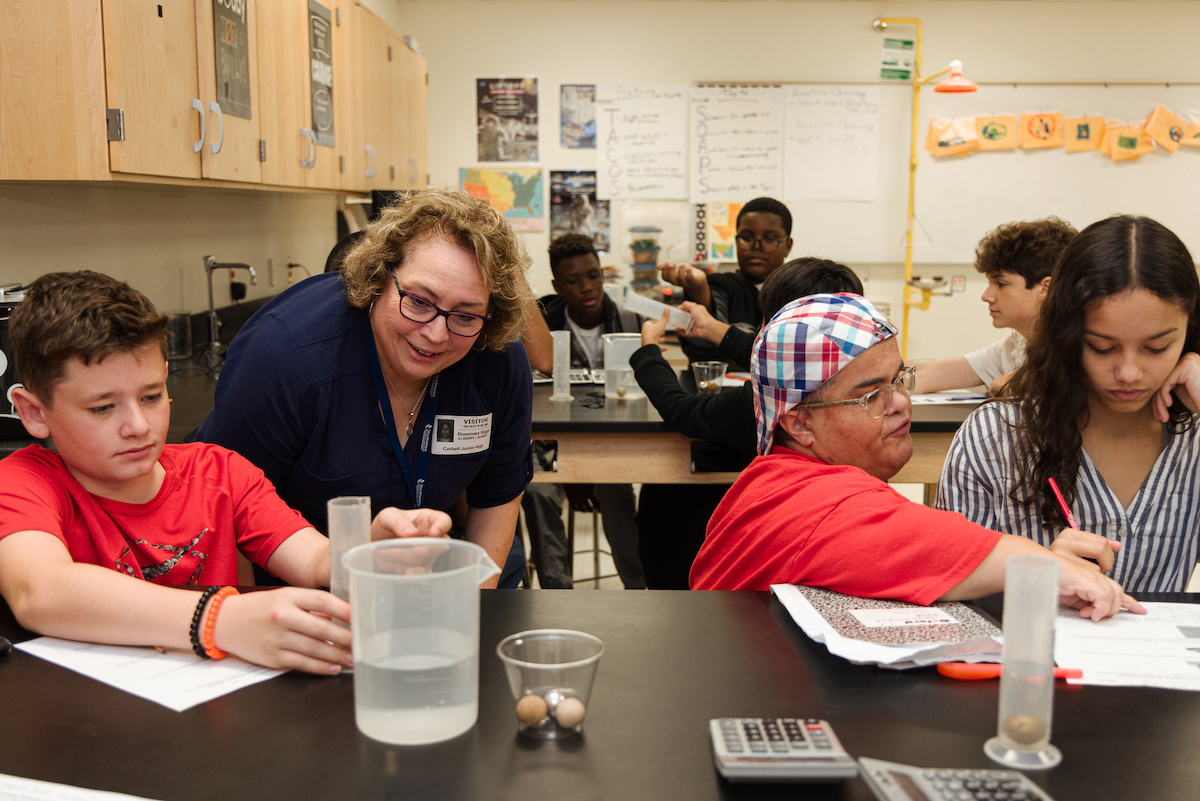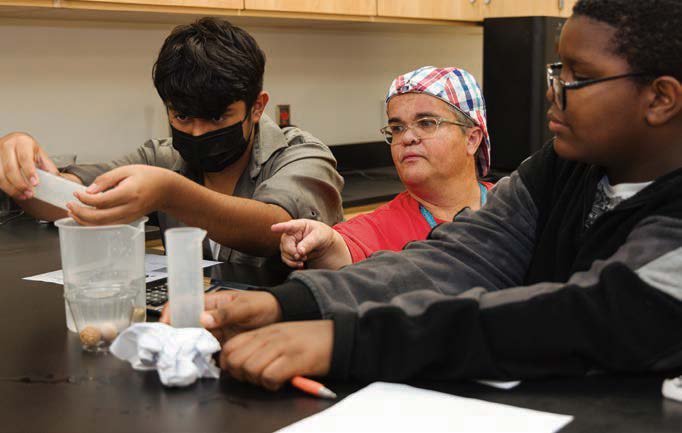Strengthening the STEM pipeline

It’s a common refrain: Texas schools aren’t keeping pace with preparing young people for in-demand STEM careers. Educators want to equip students with knowledge and skills to gather data and evaluate evidence, but it’s difficult making connections in the classroom that apply to real-world scenarios.
“I think one of the most dreaded questions a teacher can get is, ‘When am I ever going to use this information?’” says Rosemary Riggs, PhD, Texas Biomed’s Education Outreach Program Manager, who also was a high school science teacher for 10 years. “A lot of students can’t understand why balancing an equation or learning about molecular structure might be important because they don’t think it relates to everyday situations.”
Texas Biomed aims to change that, with the help of a $1.25 million science education grant designed to impact more than 9,500 students in local, middle and high schools over the next five years. The project, with funding from the National Institutes of Health (NIH), supplements teaching practices and promotes scientific literacy, thereby strengthening the STEM careers pipeline.
“Winning this federal grant was a competitive process and it complements the Institute’s overall Discovery & Learning Initiative,” says Joanne Turner, PhD, Texas Biomed’s Executive Vice President for Research. “We are very proud to be partnering with local school districts serving mostly economically disadvantaged students — places that tend to be under-resourced when it comes to the kind of teaching and hands-on learning it can take to get kids interested in science for the longterm.”

The Texas Biomed Education Initiatives encourages scientific skills and knowledge through education and mentoring programs for area K-12 students, as well as undergraduate internships and graduate education and training.
The goal of the NIH grant, known as the Science Education Partnership Award (SEPA), is to facilitate relationships among biomedical researchers, teachers and schools in order to provide opportunities for students from underserved communities to consider careers in basic or clinical research.
The Texas Biomed SEPA program is built around paid, professional development for teachers that occurs year-round. This intensive teacher training takes place in the summers with biomedical education specialists and scientists at the Institute. Each year, 10 teachers from different school districts and four teacher program leaders will take part.
“Our ultimate goal is to have a positive impact on teaching practices,” says Dr. Riggs, who directs the grant program. “This will empower them to integrate current scientific information and issues into the existing curriculum, which will have an exponential impact on students over the lifetime of each teacher’s career. It’s really about allowing teachers to take ownership over what they are teaching and make connections to the real world so students can see all the exciting career paths that are available.”
Over the past summer, in preparation for the project rollout, the first cohort of teacher leaders completed the intensive training at Texas Biomed. They studied Texas Biomed research on infectious disease, and toured the labs where studies and experiments are conducted. They also learned first-hand from scientists about making observations, gathering data and analyzing results. Throughout the school year, the teachers will maintain relationships with scientists, who will, at times, help co-teach their classes, mentor students, make classroom presentations and provide STEM career advice at the middle and high schools.

“It’s pretty amazing that I will be using journal articles about things like tuberculosis from Texas Biomed in my class this year and then later the kids will be able to learn from the very scientists who did those studies,” says Kelsey Harrison, an AP environmental and chemistry teacher at Southside High School. “It makes it real — and that’s more than half the battle in getting kids excited about learning.”
All activities will enrich, not supplant, existing curriculum, Dr. Riggs says. They also align with education standards, including the Texas Essential Knowledge and Skills (TEKS).
“We’re not asking teachers to redo their curriculum, we’re just showing ways to enhance what they’re doing in the classroom,” she says. “From there, we will measure and see whether there is an increase in student awareness and interest in STEM in general. It’s a very deliberate approach that I believe will have major ripple effects in our community for decades to come.”